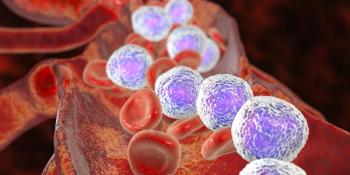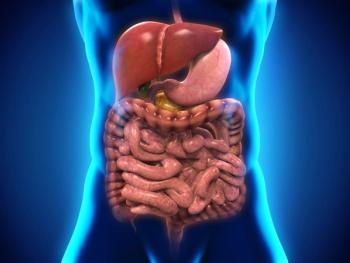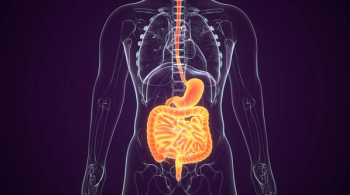
Discussing Early ctDNA Detection Through MCED Blood Tests
A recently published study showed that a multicancer early detection blood test was able to identify cancer 3 or more years before a diagnosis.
Results from a recently published study demonstrated that a multicancer early detection test was able to identify circulating tumor DNA (ctDNA) 3 years or more before a cancer diagnosis.
Blood samples were collected from 52 patients in the observational Atherosclerosis Risk in Communities (ARIC) study (NCT00005131), of whom 26 had cancer diagnosed within 6 months of blood collection and 26 did not but were matched for age, race, and sex. A total of 8 patients had a positive early plasma sample: 7 were detected with a targeted panel and 1 with an aneuploidy analysis. All 8 patients were diagnosed with cancer within 4 months of the early plasma sample acquisition; the sensitivity was 31% (95% CI, 17%-50%).
Of the cases, 3 patients had colon cancer, and 1 each had pancreatic, rectal, lung, breast, and liver cancer. Cancer stage at diagnosis was unavailable for 5 patients, but in the 3 it was, stage I, II, and III were observed.
CancerNetwork® spoke with David L. Bartlett, MD, chair of the Allegheny Health Network Institute, past president of the Society of Surgical Oncology, and surgical oncologist, following the publication of the results.
CancerNetwork: What did this study find?
Bartlett: This study, very interestingly, identified patients who developed cancer, but were also on a study where they were getting serial blood drawn over a period of time, sometimes many years. What they were able to show, in retrospect, was that patients who developed cancer had cancer DNA or cell-free DNA or ctDNA in the blood up to 3 and a half years prior to the diagnosis of their cancer. It just opens that door that says we can detect cancer early using a blood test. That is the exciting aspect of this study, just showing there is a fingerprint of cancer early on, before it'’s detectable by other means.
What are the clinical implications of having extended notice if a patient may develop cancer?
The key to early detection, or the amazing results of early detection, is that you can [detect] the cancer early, and you can cure it. Most cancers that are [detected] in stage I or II are curable with surgical or other techniques; if you want to cure cancer, you have to [detect] early. If we can screen for cancer using blood tests, we’re going to [detect] it early. The problem with that is being able to detect cancer or ctDNA, but not knowing where that tumor is in the body. What are the implications for the health care system when we identify these cancer DNA mutations circulating in the blood? How are we going to apply that in terms of a workup? That’s the next step.
Once we have a reliable test, then we can start to look at what the workup is going to be, and the frequency of screening to [detect] that cancer as you start to see it on an imaging test, so that you can then go after it surgically.
There are some early detection tests that can identify the type of cancer as well. For instance, the GRAIL test is a multi-cancer early detection test that will specify the most likely primary site for that tumor. If it [detects] a pancreas cancer, then you know you need to focus on the pancreas, and you can do very focal imaging techniques on the pancreas to see if you can identify where the lesion is. Some tests will be able to pinpoint the origin of the cancer, whereas others are just going to say, “you have cancer DNA in your blood”. It could be anything, and it’s going to be up to us to figure out how to best work those patients up.
How should a physician care for a patient with a positive ctDNA signal?
It is a problem that if we identify that there’s cancer in the body, and cannot identify where that cancer is, that’s going to have a great psychological impact on the patients who have that positive test. One thing is, we need to have a very specific test. In other words, we can’t have a test that says you have cancer but could be wrong 20% to 30% of the time, because that’s going to create a lot of anxiety that may end up worse than not getting the test at all. We have to be very careful of the specificity.
If it is positive, we know there’s something going on, and then we’re going to have to put those patients through screening tests on a regular basis to identify where it’s coming from and take care of it right away. We can do whole-body PET scan imaging to look for metabolically active cancers, but even that has a threshold of detection that is going to be higher, most likely, than cell-free DNA. In those situations, you’re going to find positive tests with no correlation, and you’re going to have to educate the patients as to what that means. The hope is that you can educate patients and say, “As long as we’re following closely, we’re going to identify that cancer before it becomes a problem and while it’s still curable, whereas if you didn’t get the blood test by the time we knew it was there, it would be too advanced to cure.” There is an advantage, but you’re going to have to sit down and talk to the patients about the significance of the findings.
What are some of the logistical hurdles in integrating this as a pre-screening test in routine practice for oncologists?
The Delphi study is a good example of this because it's not only educating patients about what this test is doing and what the significance of the test is, but it’s also educating practitioners who are used to getting a lung CT scan as a screening modality. Now they have to think about the blood test, they have to follow up on that blood test, and then get subsequent testing, as needed. There is a logistical hurdle around educating the practitioners about how to manage a positive or a negative test in these patients.
In general, the practitioners are very tuned in to cancer screening in general, and it’s part of all the metrics that they get judged by, from a quality perspective. There’s a lot of awareness around cancer screening in general. I don’t think it’s going to be too hard to implement new cancer screening blood tests, for instance, but [it may be] for the educational component because if they’re uncomfortable with those results, then they’re not going to order them. They’re going to have to do a lot of education in the communities.
How is this being applied at Allegheny Health Network?
The most commercially mature product is the GRAIL, a multicancer early detection blood test. This is not reimbursed by insurance companies, which is another big factor; if we get a test, we have to show that it has value, and, ultimately, get it approved by Medicare and other payers before it can be adopted widely because it’s expensive. Right now, the GRAIL test is available, and patients can pay for that to get screened for cancer, but it’s very important that those people understand the implications of the test. We do offer that test in our screening clinics, as well as at our free screening events on the weekends. We do free screening events at different cancer centers around the region on the weekends, and we have a comprehensive cancer screening clinic where patients can come in and get all their cancer screening done.
Reference
Wang Y, Joshu CE, Curtis SD, et al. Detection of cancers three years prior to diagnosis using plasma cell-free DNA. Cancer Discov. Published online July 04, 2025. doi:10.1158/2159-8290.CD-25-0375
Newsletter
Stay up to date on recent advances in the multidisciplinary approach to cancer.

















































































